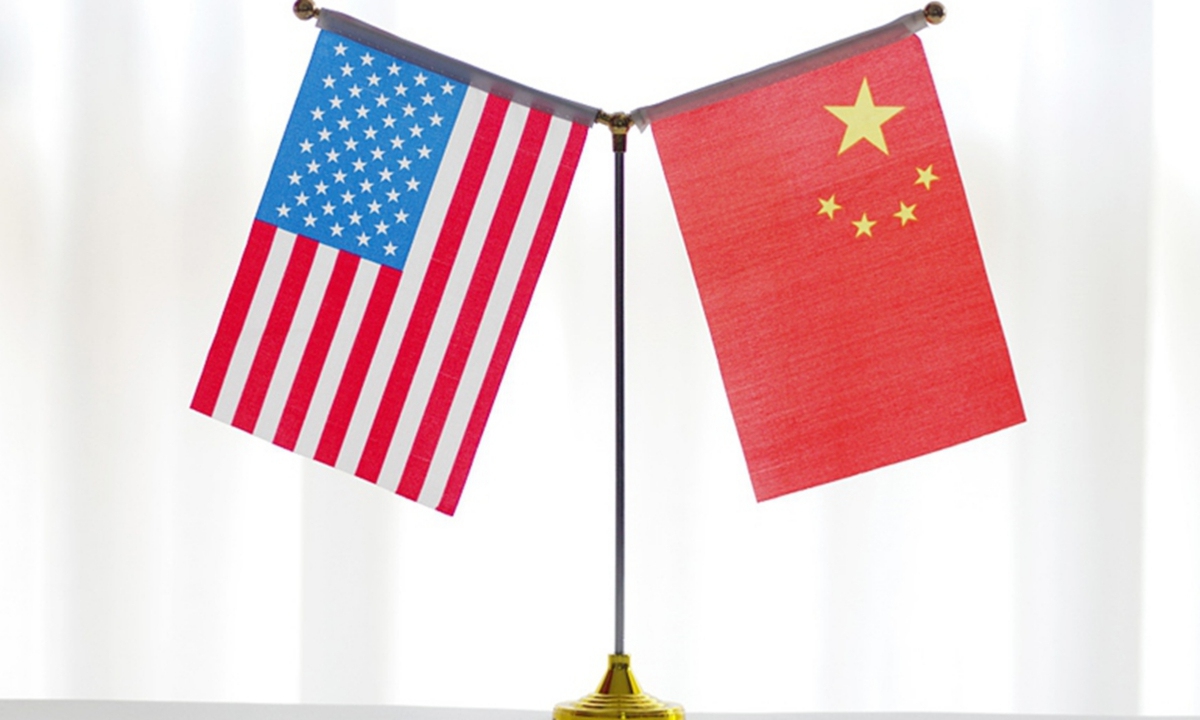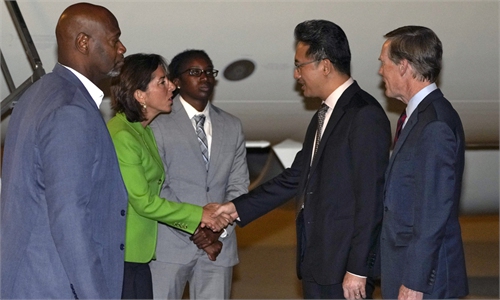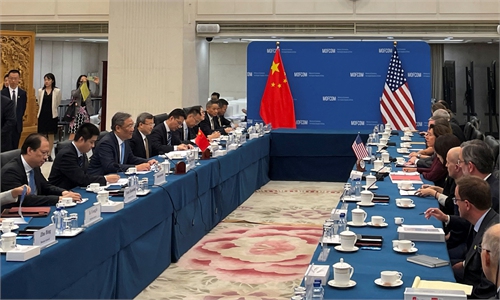'De-risking' just word game; US removal of tariffs will help avert decline in trade with China: US scholar

China US File Photo:CFP
After the Chinese and US commerce chiefs on Monday announced plans to set up new communication channels to address hot button issues, a US expert said that to reverse the declining trend in bilateral trade, the visiting US commerce chief needs to specify boundaries on trade cooperation with China, instead of just repeating old rhetoric.Removing Trump tariffs imposed on imports from China and becoming very limited in putting barriers on investment in China by US firms will be constructive and conducive for bilateral economic and trade cooperation recovery, Gary Hufbauer, nonresident senior fellow at the Washington-based Peterson Institute for International Economics told the Global Times on Monday.
Chinese Commerce Minister Wang Wentao and US Commerce Secretary Gina Raimondo held "rational, candid and constructive" talks on Monday, the second day of the US commerce chief's four-day high-stake trip to China, and the two sides announced to set up new communication channels to address various issues, according to a statement, the Chinese Commerce Ministry (MOFCOM) issued on Monday night.
Raimondo, at an event on Monday, insisted that "99 percent of trade between China and the US is unrelated to the US' export controls" and trade of products without "national security implications" can flourish, Reuters reported on Monday.
Although Raimondo is the best spokesperson that the US has in aiming to improve economic and trade cooperation at this point, it is important for her to not simply repeat the old and vague rhetoric like "small yard, high fence" or "99 percent of trade not being affected," Hufbauer told the Global Times.
"I don't think there's any real difference between 'de-risking' and 'decoupling.' It's a lot of word games," Hufbauer said.
"The key issue is, what are the limits on US export and technology cooperation with China?" Hufbauer said, "I imagine that, in her meetings with Chinese authorities, Secretary Gina Raimondo may be asked to be very precise on what the limits are."
If there's no clear definition of the limits of trade and investment, then it won't make much difference from the other meetings that the senior officials have had with Chinese senior officials, according to Hufbauer.
Raimondo is the fourth senior US official to visit China since June. Her visit comes as trade between China and the US has continued to fall throughout the year. Bilateral in the first seven months of this year fell by 9.6 percent year-on-year, of which China's exports to the US fell by 13 percent year-on-year, according to Chinese customs data.
To avert this trend toward decline, Hufbauer said that removing the tariffs imposed on imports from China would be a meaningful first step, but current political environment in Washington means it would be a difficult decision in near future.
"I really wish that the US will remove tariffs on goods imported from China, and China will also reciprocally reduce tariffs on American goods. And there will be only limited restrictions and obstacles on the investment of American companies in China and the investment of Chinese companies in the US," Hufbauer said.
But with the presidential election approaching, the statement on China will face a lot of pressure from the Republicans, Hufbauer said, adding that he is skeptical that possible removal of tariffs could happen any time soon.


